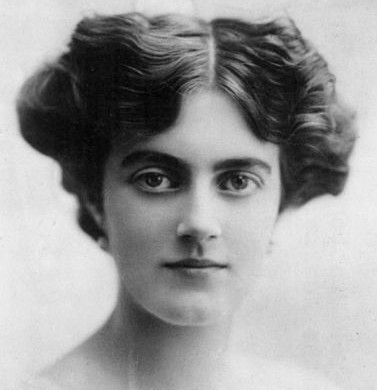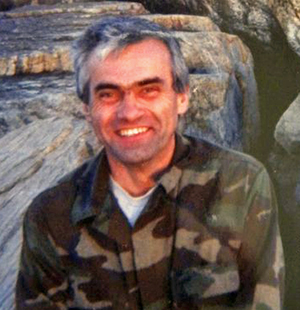“My notes always grow longer if I shorten them. I mean the process of compression makes them more pregnant and they breed new notes.” — Samuel Butler, Notebooks
In Brief
In 1906, when Teddy Roosevelt endorsed a plan to simplify the spelling of difficult words, Englishman Harry Graham offered a scheme of his own:
When Theo: Roos: unfurled his bann:
As Pres: of an immense Repub:
And sought to manufact: a plan
For saving people troub:
His mode of spelling (termed phonet:)
Affec: my brain like an emet:
And I evolved a scheme (pro tem.)
To simplify my mother-tongue,
That so in fame I might resem:
Upt: Sinc:, who wrote “The Jung:”
And rouse an interest enorm:
In conversational reform.
I grudge the time my fellows waste
Completing words that are so comm:
Wherever peop: of cult: and taste
Habitually predom:
‘Twould surely tend to simpli: life
Could they but be curtailed a trif:
For is not “Brev: the soul of Wit”?
(Inscribe this mott: upon your badge)
The sense will never suff: a bit,
If left to the imag:
Since any pers: can see what’s meant
By words so simp: as “husb:” or “gent:”
When at some meal (at dinn: for inst:)
You hand your unc: an empty plate,
Or ask your aunt (that charming spinst:)
To pass you the potat:,
They have too much sagac:, I trust,
To give you sug: or pepp: or must:
If you require a slice of mutt:
You’ll find the selfsame princ: hold good,
Nor get, instead of bread and butt:,
Some tapioca pudd:,
Nor vainly bid some boon-compan:
Replen: with Burg: his vacant can.
At golf, if your oppon: should ask
Why in a haz: your nib: is sunk,
And you explain your fav’rite Hask:
Lies buried in a bunk:,
He cannot very well misund:
That you (poor fooz:) have made a blund:
If this is prob: — nay, even cert: —
My scheme at once becomes attrac:
And I (pray pard: a litt: impert:)
A public benefac:
Who saves his fellow-man and neighb:
A deal of quite unnecess: lab:
Gent: Reader, if to me you’ll list:
And not be irritab: or peev:,
You’ll find it of tremend: assist:
This habit of abbrev:,
Which grows like some infec: disease,
Like chron: paral: or German meas:
And ev’ry living human bipe:
Will feel his heart grow grate: and warm
As he becomes the loy: discip:
Of my partic: reform,
(Which don’t confuse with that, I beg,
Of Brander Matth: or And: Carneg:)
“”T is not in mort: to comm: success,”
As Shakes: remarked; but if my meth:
Does something to dimin: or less:
The expend: of public breath,
My country, overcome with grat:,
Should in my hon: erect a stat:
My bust by Rod: (what matt: the cost?)
Shall be exhib:, devoid of charge,
With (in the Public Lib: at Bost:)
My full-length port: by Sarge:
That thous: from Pitts: or Wash: may swarm
To worsh: the Found: of this Reform.
Meanwhile I seek with some avid:
The fav: of your polite consid:
Long Haul

New Zealand’s Whangarei Aerodrome and Morocco’s Tangier Ibn Battouta Airport are on precisely opposite sides of the earth: In an antipodal map projection, which maps each part of the world to its opposite location, the two airports’ runways even cross.
Unfortunately, at 1,097 meters, Whangarei’s longest runway is too short to accommodate a commercial jet with the necessary range, so there’s no way to actually fly from one to the other. For the dedicated air traveler, the next best pairing is Taipei and Asuncion, which are 19,912 kilometers apart.
02/28/2022 UPDATE: Wait, I’m wrong — a reader tells me that on an antipodal projection the closest points on the two runways are about 23.8 kilometers, or 14.8 miles, apart. Still, remarkably close!
A Modest Proposal

On March 28, 1912, bacteriologist Almroth Wright wrote a letter to the London Times arguing that women should be denied the vote and in fact kept away from politics altogether in light of their psychological shortcomings. Two days later the Times printed this response. It was signed “One of the Doomed” but in fact had been penned by 26-year-old Clementine Churchill, wife of Winston:
March 30th, 1912
To the Editor of The Times.
Sir,
After reading Sir Almroth Wright’s able and weighty exposition of women as he knows them the question seems no longer to be ‘Should women have votes?’ but ‘Ought women not to be abolished altogether?’
I have been so much impressed by Sir Almroth Wright’s disquisition, backed as it is by so much scientific and personal experience, that I have come to the conclusion that women should be put a stop to.
We learn from him that in their youth they are unbalanced, that from time to time they suffer from unreasonableness and hypersensitiveness, and that their presence is distracting and irritating to men in their daily lives and pursuits. If they take up a profession, the indelicacy of their minds makes them undesirable partners for their male colleagues. Later on in life they are subject to grave and long-continued mental disorders, and, if not quite insane, many of them have to be shut up.
Now this being so, how much happier and better would the world not be if only it could be purged of women? It is here that we look to the great scientists. Is the case really hopeless? Women no doubt have had their uses in the past, else how could this detestable tribe have been tolerated till now? But is it quite certain that they will be indispensable in the future? Cannot science give us some assurance, or at least some ground of hope, that we are on the eve of the greatest discovery of all — i.e., how to maintain a race of males by purely scientific means?
And may we not look to Sir Almroth Wright to crown his many achievements by delivering mankind from the parasitic, demented, and immoral species which has infested the world for so long?
Yours obediently,
C.S.C.
(‘One of the Doomed’)
Black and White
Plateau’s Laws

Clusters of soap bubbles obey some pleasingly simple rules: They arrange themselves into constant-mean-curvature surfaces (such as pieces of spheres) that meet in threes at 120° along seams, which in turn meet in fours at about 109° angles at points.
“Nothing more complicated ever happens,” writes mathematician Frank Morgan, even in complicated clusters with thousands of bubbles.
Belgian physicist Joseph Plateau observed and recorded this fact in the 19th century, but he offered no proof. More than 100 years would go by before Rutgers University mathematician Jean Taylor produced a complete explanation. Her demonstration required no physics or chemistry, just the principle of area minimization.
Morgan writes, “Many pages of complicated mathematics later came the conclusion: Plateau’s laws, 120° angles, 109° angles, and all.”
(Frank Morgan, “Mathematicians, Including Undergraduates, Look at Soap Bubbles,” American Mathematical Monthly 101:4 [April 1994], 343-351.)
Encore
Ballerina Anna Pavlova was famous for creating The Dying Swan, a four-minute solo ballet depicting the last moments in the life of a swan, after the cello solo “Le Cygne” in Camille Saint-Saëns’ Le Carnaval des animaux. She performed the role some 4,000 times; American critic Carl Van Vechten called it “the most exquisite specimen of [Pavlova’s] art which she has yet given to the public.”
Two days after Pavlova’s death in 1931, the orchestra at London’s Apollo Theater paused between selections and began to play “The Death of the Swan.” Dance writer Philip J.S. Richardson recorded what came next:
The curtain went up and disclosed an empty, darkened stage draped in grey hangings, with the spotlight playing on someone who was not there. The large audience rose to its feet and stood in silence while the tune which will forever be associated with Anna Pavlova was played.
“It was an unforgettable moment,” he wrote.
First Things First

During World War I, Ernest Rutherford worked tirelessly on a secret project to detect submarines by sonar. But on one occasion he did decline to attend a committee meeting.
“I have been engaged in experiments which suggest that the atom can be artificially disintegrated,” he wrote. “If it is true it is of far greater importance than a war.”
The Blind Leading
I just ran across this absurd sentence in Love in the Lead, Peter Brock Putnam’s 1979 history of the seeing eye dog:
As late as the 1950s, an association for the blind in a southern city used to post sighted monitors at the entrance for its Christmas party, so that the blind guests who could not see each other’s color would be able to segregate racially.
Apparently this is true. In 1945 federal judge J. Skelly Wright was attending a Christmas Eve party at the U.S. attorney’s office in New Orleans. Across Camp Street, at the Lighthouse for the Blind, he could see another party going on. “He watched the blind people climb the steps to the second floor,” writes journalist Jack Bass. “There, someone met them. He watched a blind Negro led to a party for blacks at the rear of the building. A white person was led to a separate party.”
“They couldn’t see to segregate themselves,” Wright said later. “That upset me a great deal.” In 1956 he ordered Louisiana schools to desegregate. He said that the incident of the Christmas party had given him “my mature and great sympathy for Negroes.” As he told this story to journalist W.J. Weatherby, he “was so moved that he could not complete the story for several minutes.”
An Overlooked Death

Late one night in 2001, Polish immigrant Henryk Siwiak set out to find a Pathmark supermarket in Brooklyn in order to start a new job. Around 11:40 p.m., residents in the area heard an argument followed by gunshots. Siwiak was found dead face down in Decatur Street, shot in the lung. A trail of blood showed that he had staggered there from Albany Avenue seeking help.
Unfortunately, this happened on September 11, the day of the terrorist attacks. Siwiak spoke poor English and was wearing camouflage clothing, which may have led his assailant to think he was associated with the attacks. In any case, with the city in chaos, police could not attend as closely to the case as they otherwise would have, and that day’s news coverage was devoted to the attacks, which may have prevented residents with potentially useful information from coming forward.
The case remains unsolved. “I’m afraid this is forever,” Henryk’s widow Ewa told the New York Times in 2011. Because the terror victims were not included in the city’s crime statistics, Siwiak’s death is the only homicide recorded in New York City on that day.

